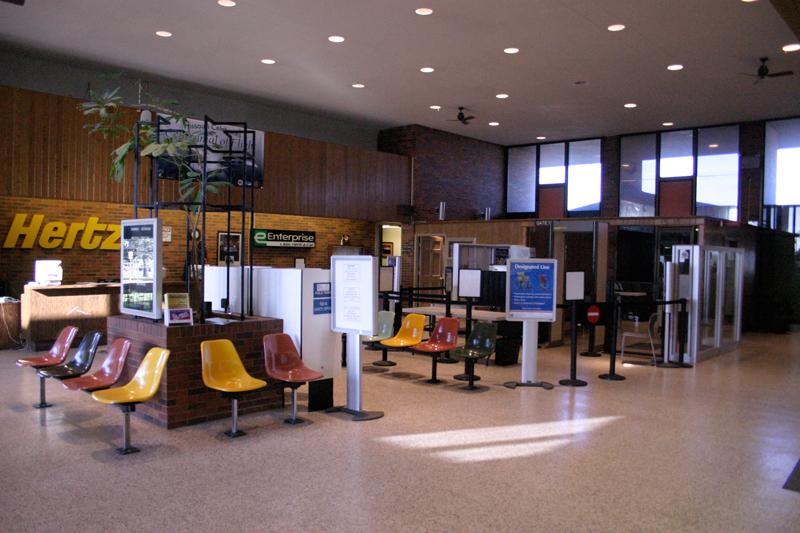The Columbia Chamber of Commerce submitted a report to City Council on Monday night detailing a project to improve Columbia Regional Airport.
The Chamber of Commerce found that only 8 percent of the 440,000 potential customers use Columbia Regional Airport. The main competitors are St. Louis, Kansas City and Springfield airports, according to the report.
The council adopted a resolution to give $38,407 to Parsons Brinckerhoff, Inc., a consulting firm, to come up with conceptual drawings and cost estimates of improvements. The findings from the consulting firm are due back by the end of April, Columbia Public Works spokesman Steven Sapp said.
The report suggested various improvements to the airport, including a $34 million runway expansion, a $14 million overpass, terminal expansion, additional marketing and an escrow fund of private money to entice airlines to Columbia, according to the report.
Funding for the $34 million runway expansion would come from a combination of Federal Aviation Administration funding, state assistance and local city government funds, according to the report.
Public Works hopes to expand the runway from 6,500 to 7,000 feet, which would require purchase of extra property and rebuilding two roads. Taxiways and a crosswind runway would also see improvements, Sapp said.
While federal funding from the FAA for runway expansion is likely, acquiring the same kind of funding for terminal expansion is uncertain, Sapp said.
“The question is, are we eligible to apply for FAA funding for terminals?” Sapp said. “It all depends on who you talk to at the FAA. Some airports have been successful and some have not. Part of it is keeping our congressional delegates in the loop and letting them talk to their constituents as well as FAA folks in Washington and Kansas City.”
The report also suggested the creation of an Airport Advisory Board independent from Public Works that would report directly to the city manager. This would be an inevitable step, City Manager Mike Matthes said.
“I do think it’s a natural step to move to a more autonomous authority,” Matthes said. “I don’t think it’s whether we should or not, it’s when.”
Funding for the $14 million overpass would come from the Missouri Department of Transportation, according to the report.
A task force created by the Chamber raised $643,500 from 39 mid-Missouri private companies to go to an escrow fund to attract additional air service to the city.
Despite the information in the report, it’s still too early to move forward with terminal expansion, Mayor Bob McDavid said.
“I personally don’t think we’re in a position to talk about funding sources for a terminal yet,” McDavid said. “There will have to be a local funding source. It will probably involve leveraging federal money and that’s a process that will be complex. For me, the important thing right now is stabilization of our American Airlines relationship, which seems to be going very well.”
City officials also hope to make the airport more accessible to people with disabilities, Sapp said.
“That building was built over 40 years ago,” Sapp said. “It comes nowhere close to meeting (Americans with Disabilities Act) requirements from the parking lot to the building. So we’ve got to improve the accessibility for everyone.”
The terminal expansion will address the layout of the terminal to accommodate security concerns and create a more organized lobby space, Sapp said.
“It was built in the late ’60s, there weren’t a lot of security concerns,” Sapp said. “Now after 2001, of course, TSA takes up two-thirds of the lobby space. So a better mix of space is needed because this building is one that sort of has stuff all over it in no discernible fashion.”
Airport improvements will not only aid in airport efficiency but will also attract future business, Sapp said.
“Certainly not only (can we attract) airlines, but potentially customers as well,” Sapp said. “Curb appeal applies to both customers and airlines. Right now, if you fly into Columbia Regional Airport, especially if you’re flying in for the first time, the first thing you see is three double-wide trailers.”
The report also set a list of goals the airport should achieve in the coming years. By 2020, the airport should attract one to two more airlines to the airport, offer at least six departures per day, increase the market share to 40 percent, encourage airlines to use a minimum of 66-seat passenger jets and consistently sustain 85 percent ridership, according to the report.








